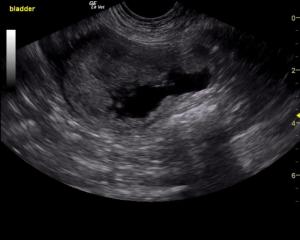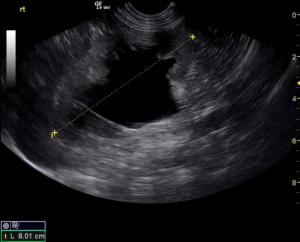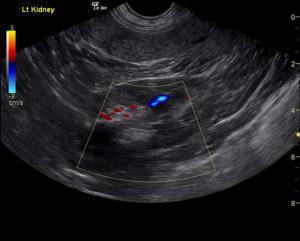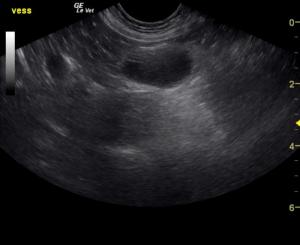Clinical Differential Diagnosis
Urinary/prostatic neoplasia, urolithiasis, UTI, coagulopathy, idiopathic.
Image Interpretation
The urinary bladder presented a concentric, parenchymal mass that occupied most of the apical ventral and apical dorsal bladder with extensive polypoid changes entering into the caudal aspect of the ventral bladder and cystourethral junction. Dorsal polyps were also noted. Right hydroureter was noted which extended proximally to the right kidney with moderate to severe hydronephrosis. Hydronephrosis measured 3.82 x 4.0 cm. The right kidney measured 8.01 cm in length. The left kidney measured 7.0 cm with minor degenerative changes. No obstructive disease was noted. The iliac lymph node was enlarged in this patient, hypoechoic and irregular measuring approximately 2.0 cm. This is strongly suggestive for metastatic disease. Other small iliac lymph nodes were enlarged.
Sonographic Differential Diagnosis
Concentric bladder mass occupying most of the bladder with right, obstructive hydroureter and hydronephrosis. Palliative therapy with ureteral and urethral stent placement would be ideal in this patient with adjunctive chemotherapy. However, the prognosis is poor long term.
DX
Bladder mass with ureteral obstruction and hydronephrosis.
Outcome
The patient was lost to follow-up.






